
"Herbaceous," "woody," "undertone of mint," "earthy," "smokey," "apple-like" and "green" are descriptive of the taste of lavender. A member of the mint plant family, lavender has a unique and distinctive flavor that separates it from other species of mint. Lavender presents a floral, pungent aroma and flavor.
Plant Description

The deliciously distinctive fragrance and flavor of lavender has been prized for centuries. Native to the mountainous regions of the Mediterranean, Spain and Portugal, aromatic lavender grows best in stony, sunny locations. Today lavender is cultivated in the United States, Europe, Africa and Australia. A short, heavily branched perennial shrub, lavender grows to a height of 18 to 24 inches. The foliage is composed of silvery-green, feathery leaves, oblong and tapered. Deep blue-violet flowers are arranged in spirals of six to 10 small blooms that rise above the foliage.
Lavender can be used fresh, preserved or dried. Lavender essential oil is obtained by steam distillation of the flowers.
Incorportating Lavender Into Food Recipes
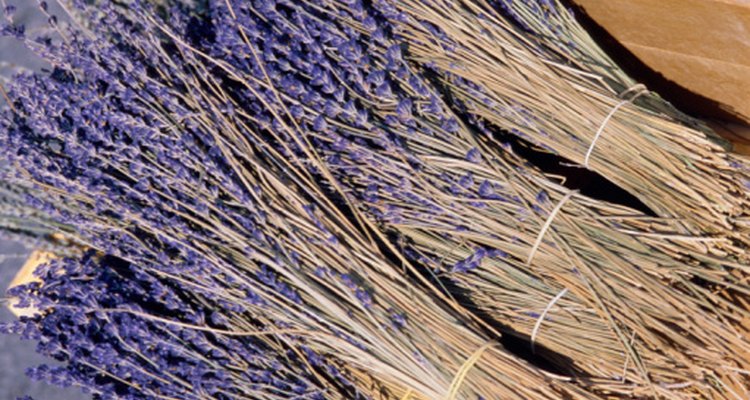
When cooking, you can artfully substitute lavender for thyme or marjoram. Grind lavender buds with natural sugar to use as a garnish or in recipes calling for sugar. Use 1 tsp. of dried lavender buds to 3 cups of sugar. Lavender is pungent and highly flavorful. A little goes a long way. Experiment with lavender, starting with just a pinch at a time, until you discover the amount that pleases your palate.
Lavender is often used with sweets, adding color, visual appeal and flavor to candies, cakes, breads, syrups, sauces, wine, ice cream, jellies, lemonade and tea. Lavender is also employed to add a sweet, herbaceous flavor to chicken, fish and pork. Lavender is added to honey and infused in vinegar and salad dressings.
Lavender Essential Oil Uses
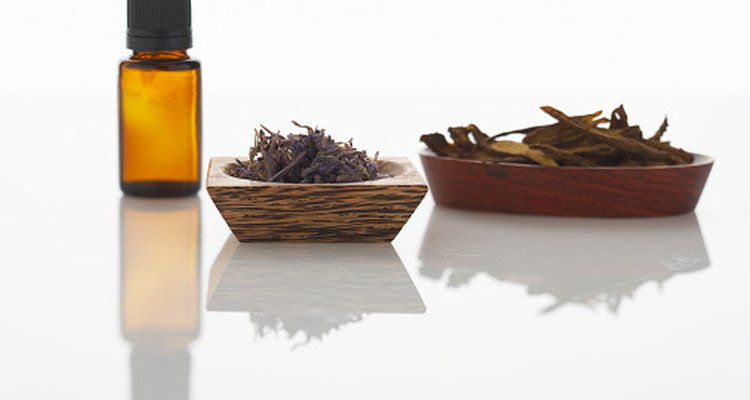
Add 10 to 15 drops of therapeutic grade lavender essential oil to 1 cup of cream and 1/2 cup of organic honey. Blend well and add to a warm or hot bath. Lavender calms nerves, eases anxiety and promotes a restful sleep. Lavender's anti-bacterial, anti-fungal, emollient and anti-infection properties soothe rough red skin, relieve the sting of a sunburn, calm the itching of insect bites and promote healing of rashes and skin blemishes.
Lavender is used extensively in aromatherapy for calming, centering and balancing the body. Lavender derives its name from the Latin word lavare, which means to clean, bathe or wash. Lavender is an integral ingredient in many soaps, shampoos, perfumes, bath gels and salts.
Storage
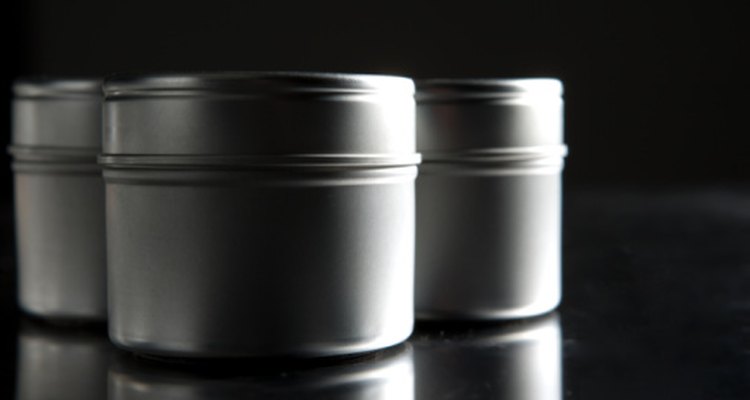
Store dried lavender buds in amber or dark blue glass jars, or in metal tins with airtight lids. Properly stored lavender buds maintain their sweet fragrance and flavor for many years. Store lavender essential oil in tightly sealed colored glass bottles. Keep essential oil out of bright sunlight.
Related Articles

How to Make Calendula Tea

How to Make Organic Shampoo at Home

How to Cook With Pineapple Sage

How to Make Organic Shampoo & ...
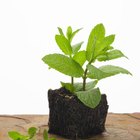
Difference Between Peppermint Extract & ...

How to Store Shallots
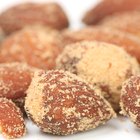
How to Make Your Own Smoked Almonds ...

Calendula Ointment for Scars

How to Use Sage to Color Hair

Essential Oils That Make Hair Smell Good

How to Make Plum Sauce
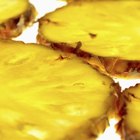
What Kind of Food for a Hawaiian Themed ...

Baking Substitution for Rosewater
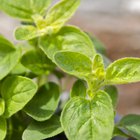
How to Eat Fresh Oregano Leaves
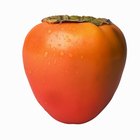
What Can You Do With Fresh Persimmons?

How to Make a Hot Toddy With Peppermint

The Culinary Uses of the Eucalyptus Leaf

Homemade Cream of Mushroom Soup Recipe

How to Eat Rose Petals

What Drinks Can I Make With Banana Rum?
References
Resources
Writer Bio
A passionate writer for more than 30 years, Marlene Affeld writes of her love of all things natural. Affeld's passion for the environment inspires her to write informative articles to assist others in living a green lifestyle. She writes for a prominent website as a nature travel writer and contributes articles to other online outlets covering wildlife, travel destinations and the beauty of nature.
Photo Credits
Comstock Images/Comstock/Getty Images